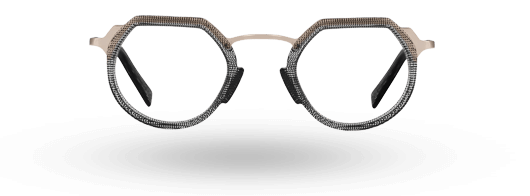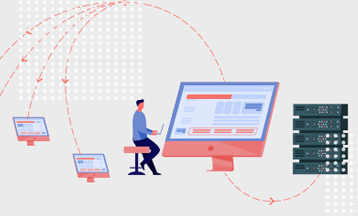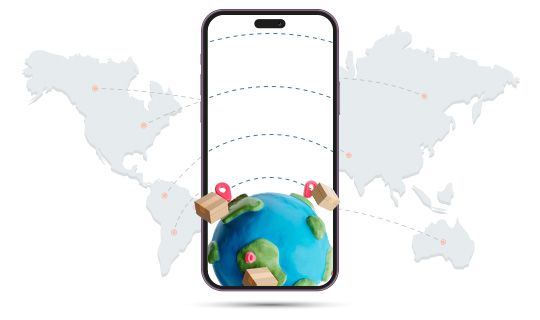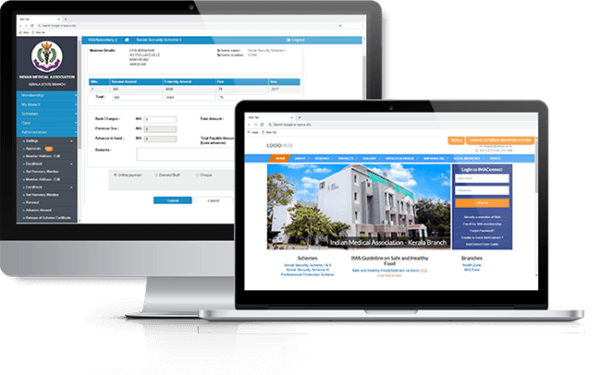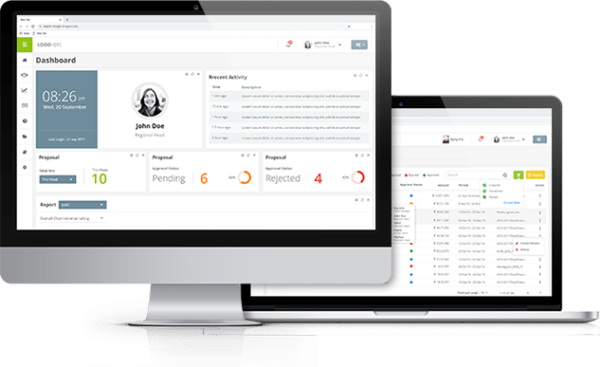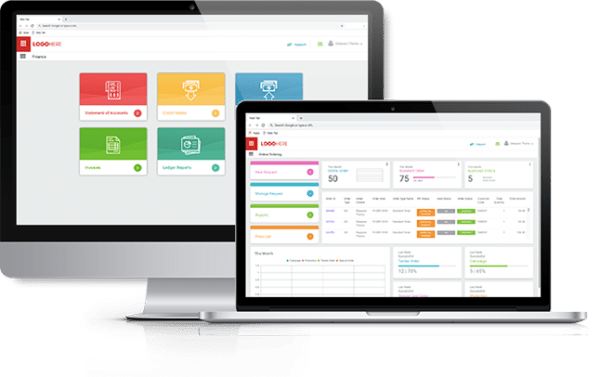In today’s fast-paced digital landscape, staying competitive requires more than just keeping up with the latest technology trends. It demands a strategic approach to migration and modernization, especially when it comes to leveraging the robust offerings of the Microsoft Technology Stack. From legacy systems to cloud-native architectures, organizations are constantly seeking ways to enhance efficiency, scalability, and agility while minimizing risks and costs.
Understanding the Imperative for Migration and Modernization
Legacy systems, though once reliable, can become bottlenecks inhibiting growth and innovation. Outdated infrastructure may struggle to meet the demands of modern business requirements, leading to decreased productivity, higher maintenance costs, and increased security vulnerabilities. In contrast, modernizing your technology stack with Microsoft offers a pathway to harnessing the power of cloud computing, AI-driven insights, and seamless integration across platforms. Legacy systems, while once reliable and effective, can quickly become obstacles to growth and innovation.
These systems are often siloed, inflexible, and difficult to integrate with modern technologies, hindering agility and responsiveness to market demands. Maintaining outdated systems can be costly and resource-intensive. Legacy applications require specialized skills and hardware, leading to higher operational expenses and reduced ROI. Moreover, as these systems age, the risk of downtime, security vulnerabilities, and compliance issues escalates, posing significant risks to business continuity. In today’s digital-first world, customers expect seamless and personalized experiences across channels. Legacy systems often lack the capabilities to deliver on these expectations, resulting in poor user experiences, decreased customer satisfaction, and ultimately, loss of market share to more agile competitors.
Assessing Your Current State and Future Goals
Embarking on a migration and modernization journey begins with a comprehensive assessment of your existing IT landscape and aligning it with your business objectives. This involves evaluating factors such as application dependencies, data security requirements, regulatory compliance, and user experience. By gaining a clear understanding of your organization’s unique needs and pain points, you can tailor a migration strategy that maximizes value and minimizes disruption. Conduct a comprehensive inventory of your existing IT infrastructure, including hardware, software, and network components.
Document key details such as system configurations, dependencies, and usage patterns. Assess your application portfolio to identify legacy systems, redundant applications, and outdated software versions. Classify applications based on factors such as business criticality, usage frequency, and compatibility with modern platforms. Analyze your data assets to understand their volume, variety, velocity, and veracity. Identify data sources, storage locations, and data management practices. Evaluate data quality, consistency, and accessibility to ensure they meet business requirements. Conduct a comprehensive audit of your cybersecurity posture and compliance with regulatory standards such as GDPR, HIPAA, or PCI DSS. Identify security vulnerabilities, gaps in compliance, and potential risks associated with legacy systems.
Choosing the Right Migration Approach
Microsoft provides a range of tools and services designed to facilitate smooth migration and modernization processes. Whether you’re transitioning to the cloud, updating legacy applications, or optimizing data management practices, selecting the appropriate migration approach is critical. Options such as lift-and-shift, re-platforming, refactoring, or rearchitecting offer varying levels of complexity and benefits, depending on your specific circumstances.
Lift-and-shift, also known as rehosting, involves migrating applications or workloads from on-premises infrastructure to the cloud with minimal changes to their architecture or functionality. This approach is typically fast and straightforward, making it ideal for organizations looking to quickly move their existing systems to the cloud. Lift-and-shift migrations offer rapid deployment, reduced upfront costs, and minimal disruption to business operations. By leveraging cloud infrastructure, organizations can benefit from improved scalability, reliability, and cost-efficiency without the need for significant redevelopment efforts.
Embracing Cloud-Native Solutions with Azure
Microsoft Azure stands at the forefront of cloud computing, offering a comprehensive suite of services for building, deploying, and managing applications with unparalleled flexibility and scalability. By migrating workloads to Azure, organizations can take advantage of advanced capabilities such as AI and machine learning, IoT integration, serverless computing, and DevOps automation. This enables faster time-to-market, improved resource utilization, and greater agility in responding to evolving market dynamics. In the era of digital transformation, businesses are increasingly turning to cloud-native solutions to drive innovation, enhance agility, and optimize costs. Among the leading cloud platforms, Microsoft Azure stands out as a robust ecosystem that empowers organizations to build, deploy, and scale applications with unparalleled flexibility and efficiency.
By embracing Azure’s cloud-native capabilities, businesses can accelerate their journey towards digital excellence and gain a competitive edge in today’s rapidly evolving market landscape. Cloud-native refers to an approach to building and running applications that leverage the scalability, resilience, and agility of cloud computing. Unlike traditional on-premises or legacy systems, cloud-native applications are designed to be modular, scalable, and loosely coupled, making them well-suited for dynamic and distributed environments. Decomposing applications into smaller, independent services that can be developed, deployed, and scaled independently. Packaging applications and their dependencies into lightweight, portable containers for consistent deployment across environments. Embracing automation, continuous integration/continuous deployment (CI/CD), and infrastructure as code (IaC) to streamline development, testing, and deployment workflows.
Unlocking Innovation with Modern Application Development
In today’s digital economy, agility and innovation are paramount. Microsoft’s modern application development tools, including .NET Core, ASP.NET, and Xamarin, empower developers to build responsive, scalable, and cross-platform solutions that meet the demands of modern users. By embracing microservices architecture, containerization, and continuous delivery practices, organizations can accelerate development cycles, enhance collaboration, and deliver superior customer experiences. Microservices architecture is a design approach that involves breaking down complex applications into smaller, loosely coupled services that can be developed, deployed, and scaled independently.
Unlike monolithic architectures, which are characterized by tightly integrated components, microservices promote modularity, flexibility, and agility, enabling organizations to iterate quickly, adapt to change, and deliver value incrementally. Microservices can be independently scaled based on demand, allowing organizations to optimize resource utilization and handle varying workloads more efficiently. Each microservice can be developed using the most suitable technology stack, programming language, or framework, enabling teams to choose the right tool for the job and avoid technology lock-in. Microservices are inherently resilient to failures, as failures in one service do not necessarily impact the entire application. By incorporating redundancy and fault tolerance mechanisms, organizations can ensure high availability and reliability.
Ensuring Security and Compliance
With cybersecurity threats on the rise and regulatory requirements becoming more stringent, safeguarding sensitive data and maintaining compliance is non-negotiable. Microsoft’s comprehensive security offerings, including Azure Security Center, Azure Sentinel, and Microsoft 365 Defender, provide robust protection against threats while enabling continuous monitoring, threat detection, and incident response. By integrating security into every layer of the technology stack, organizations can mitigate risks and ensure peace of mind. Automated testing practices, such as unit tests, integration tests, and end-to-end tests, ensure the quality and reliability of code changes before they are deployed to production environments.
Infrastructure as code allows organizations to define and manage infrastructure resources using code, enabling consistent, repeatable, and version-controlled infrastructure deployments. Deployment pipelines automate the process of building, testing, and deploying code changes through a series of automated stages, such as build, test, staging, and production, ensuring that changes are deployed reliably and consistently. Modern application development practices, such as microservices architecture, containerization, and continuous delivery, have become essential enablers of innovation and agility in today’s digital economy. By embracing these practices, organizations can unlock new opportunities for growth, differentiation, and competitive advantage, while delivering value to customers faster and more efficiently than ever before.
In an era defined by rapid technological advancement and digital transformation, migration and modernization have emerged as imperatives for organizations seeking to thrive in the digital age. By embracing the Microsoft Technology Stack and adopting a strategic approach to migration and modernization, businesses can unlock new opportunities, drive innovation, and achieve sustainable growth. With a clear vision, careful planning, and the right partners, the journey towards a modern, cloud-native future is within reach. Connect with https://www.zinemind.com/ to learn more about Migration and Modernization Strategies with Microsoft Technology Stack.

